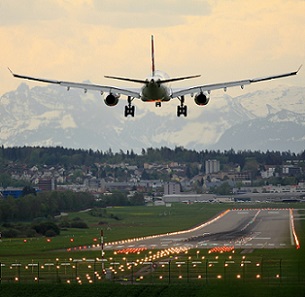 An AvSax lithium battery fire mitigation bag
An AvSax lithium battery fire mitigation bag
 Lithium battery fires have happened on hundreds of passenger planes in the last few years
Lithium battery fires have happened on hundreds of passenger planes in the last few years

Nine incidents of lithium batteries overheating or catching fire have been reported on aircraft in the USA alone this autumn.
This follows a summer that saw a doubling in the number of these kind of fires on passenger planes.
The report by the Federal Aviation Administration (FAA) reveals the nine incidents between the start of September and now mainly involved mobile phones although a smart baggage tag powered by lithium-ion batteries burst into flames at an airport.
In the four months from the beginning of May and the end of August 2021, 26 incidents involving batteries in everyday devices such as mobile phones, laptops, earphones and vapes were reported to the FAA. This was well over double the amount recorded in the same four months of 2020.
In the latest incidents the strangest one was the electronic baggage tag and this is what the FAA reported: “A passenger’s checked bag burst into flames during the offloading process. The suspected source of fire was a Lithium battery powered smart tag. Airport fire department personnel arrived on scene and extinguished the flames.”
It’s sheer good fortune this hadn’t happened in the luggage hold as lithium fires burn with such heat and intensity they are very difficult for aircraft’s automatic firefighting systems to put out.
Another fire scare happened on an American Airlines flight: “A passenger’s cell phone was smoking on-board the plane while travelling from Charlotte, North Carolina, to Frankfurt, Germany. The phone was placed in a fire containment bag. The flight was not diverted.”
On a United Airlines flight: “An inflight thermal runaway event occurred when a passenger’s cell phone overheated and expanded. Aircrew personnel mitigated the incident by placing the phone inside a thermal containment bag.”
This means there have now been at least 346 aviation-related incidents involving lithium batteries carried as cargo or baggage recorded since January 23, 2006.
Several of the recent incidents were contained in special battery fire containment bags which many airlines now carry on board. A fire sparked by a lithium battery in the confined space of a passenger jet cruising at 35,000 can be potentially catastrophic.
AvSax are the world’s best-selling fire containment bag for personal electronic devices ranging from mobile phones to laptops on aircraft and are now on more than 15,373 aircraft operated by 80 airline companies.
They have been used 33 times to deal with emergencies since the start of 2017 and every time they have been deployed the aircraft has been able to complete its journey safely with no need to divert or make an emergency landing. Diversions can be very costly to the airline company and can even run into hundreds of thousands of dollars.
AvSax won the prestigious Queen’s Award for Enterprise in the UK in 2018.
Passengers take hundreds of personal electronic devices on board every flight which means there is always the possibility one of them could catch fire if the lithium batteries in them overheat. This could be sparked by several reasons from the device falling down the aircraft seats and then being crushed to batteries that are a cheap copy and manufactured to a poor standard.
When lithium batteries overheat or catch fire they go into what’s known as thermal runaway.
This happens when one cell in a battery overheats it can produce enough heat – up to 900°C (1652°F) – to cause adjacent cells to overheat. This can cause a lithium battery fire to flare repeatedly and they are very difficult to put out which is why so many airlines now carry AvSax battery fire containment bags designed to deal with overheating or burning PEDs.
AvSax managing director Richard Bailey said: “These figures are only collated by the Federal Aviation Administration in the USA which indicates there may be an even greater problem worldwide.”